 |
UK Broadcast Transmission |
|
|||||||||||
THE TRANSMISSION GALLERY
| Photos by John P Martin | Page last updated: 2022-03-28 |
|
|||||||||||||||||||||
| The Dalwhinnie self-help relay was listed as having Rosemarkie as its parent and a licence for 1 Watt per channel on channels 23, 26, 29, 33. It served approximately 50 dwellings. As it was a four-channel transposer, it will have accommodated or anticipated the launch of Channel 4, dating it to around 1983. Labelling on the transposers, however, show that it actually transmitted on channels 40, 43, 46, 50. This is a puzzle and also a technical challenge as Rosemarkie was using the adjacent channels of 39, 42, 45, 49. Either the filtering was amazing or some other confusion has entered the equation over the decades. The relay fell out of use when satellite receivers became available at the end of the 1990s. The last households in Dalwhinnie to rely upon it were given satellite dishes by the Community Council - no doubt a cheaper option than maintaining the relay. Huge thanks are due to the Chair of the Dalwhinnie Community Council and residents of the village for enthusiastically contributing their knowledge of the relay, without which I would not have found the site at all. One such resident's comment was particularly useful: "The original receiver was at the top of Fountain Forestry road on the Fara, run by batteries. It then sent a signal to a mast above Heatherlea which split it into two, one for the distillery and Cuaich and the other for the village." This comment makes it clear that this self-help was fed from a separate receive location Dalwhinnie (Link Site). The receive link site was battery-powered, and other residents remember taking it in turns to go and change the batteries. It was an Active Deflector although there is no record of a licence for an AD. This self-help is co-located with a covered water reservoir. The following photos and notes are about the transposer site. The site is 380m AOD which is 30m higher than the community it served. Two masts of 4-5m AGL are present. The aerials present are almost certainly not the originals. The wooden equipment hut has now almost completely perished but, excitingly, still contains the Rx amplifiers and filters as well as the transposers with their combiners and splitters. The community will be considering whether to leave the site as it is or to relocate the equipment to a display area in the village so that its history can be shared with visitors. |
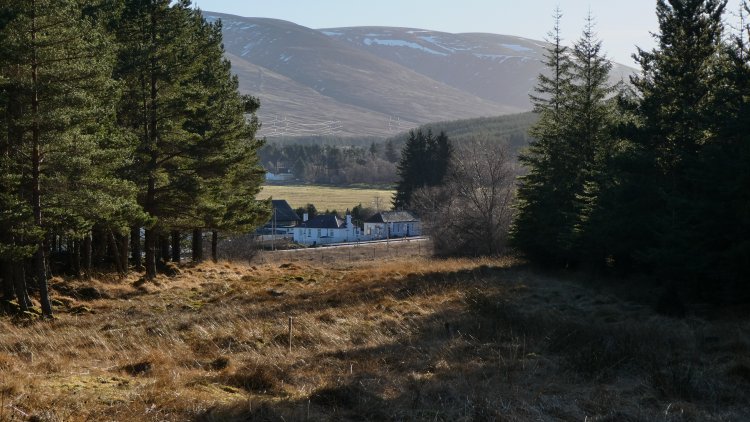
| Looking down onto Dalwhinnie village from a vantage point close to the relay. |
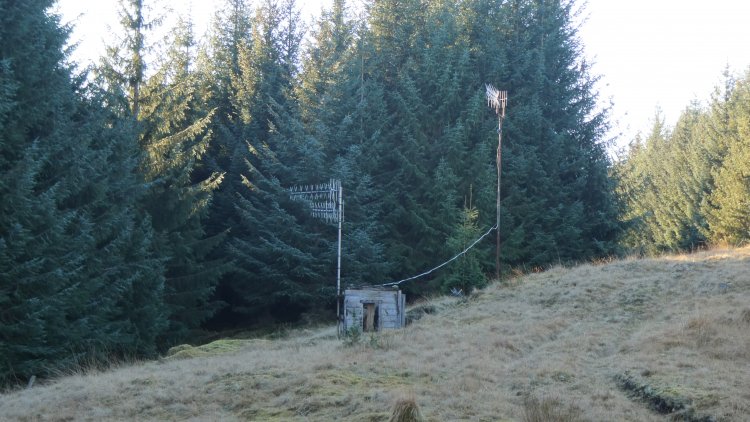
| First sight of the relay |

| The terrain between Rosemarkie (right) and Dalwhinnie (left) taking into account mast heights. An exercise in optimism? |
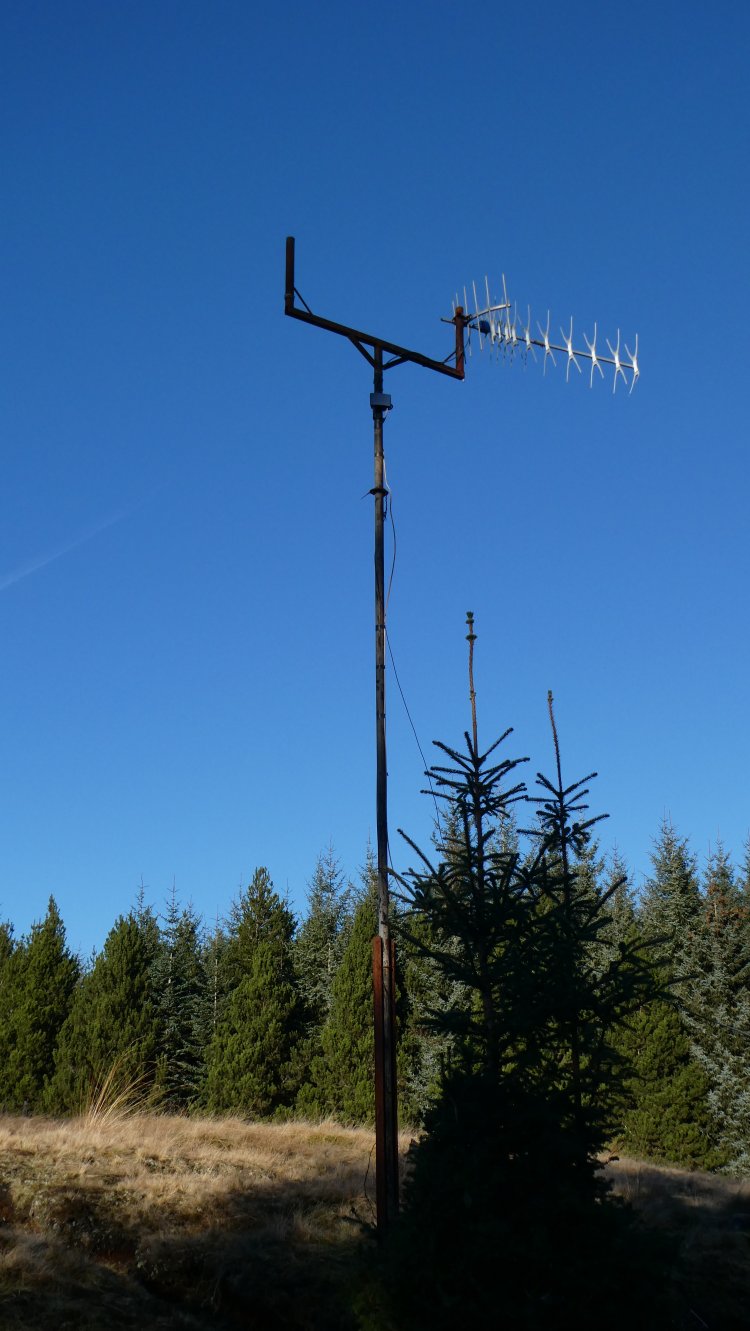
| The domestic-grade RX Yagi with a bearing of 52 degrees (North-East) which is roughly in the direction of Rosemarkie (but actually more accurately pointed at Grantown!). The interesting point is that the RX aerial is vertically polarised. Rosemarkie is currently HP but I don't know if it was VP back in 1983. A masthead pre-amp is clearly visible as is a bracket which may have supported a second aerial, either as backup or for use as a bayed/stacked array. |

| Sure enough, at the base of the RX mast is another discarded Yagi. |

| Coax from the RX mast is suspended from a steel cable to the equipment hut, some 8 metres away. |

| The two domestic-grade TX Yagis (VP). One points back along the axis of the RX aerial. This would have served the Dalwhinnie Distillery and the few surrounding dwellings. The other Yagi has a bearing of 143 degrees and points (SE) to the main part of Dalwhinnie village. |
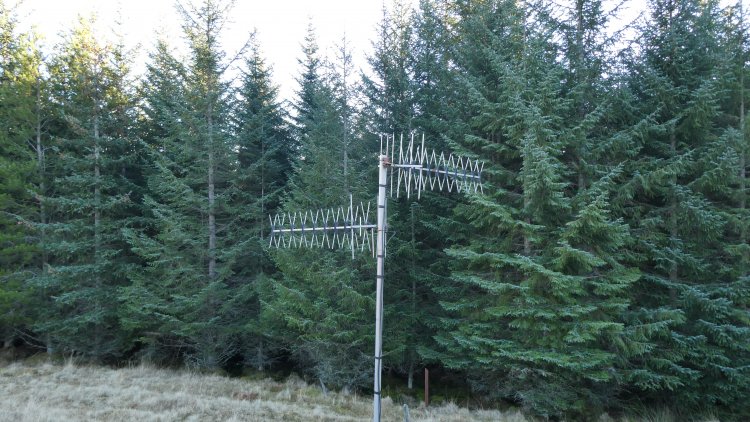
| The Yagi pointing to the village (right) points directly into dense forestry. Presumably this has grown since the establishment of the site in c1983. |

| The equipment hut has seen better days! It is of wooden construction and had an asphalt felt roof. |

| Exciting to find some equipment still intact inside the hut! |
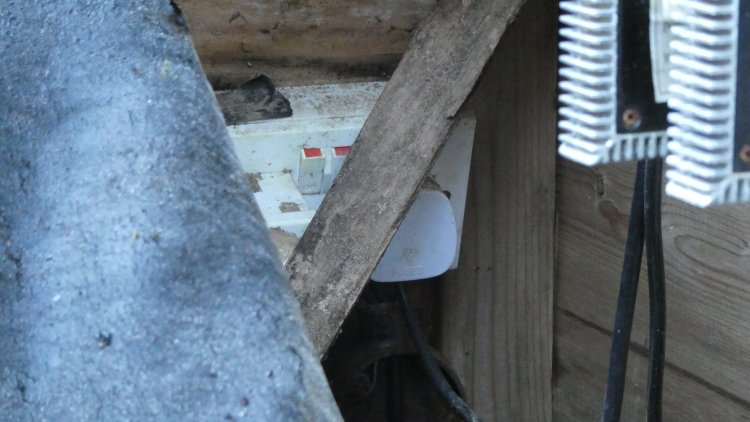
| A twin 13A mains socket can be seen inside. One local resident reported that villagers used to take it in turns to go up the hill to "change the batteries" which was no fun in bad weather. So the presence of the mains sockets implies that the equipment was powered by batteries feeding a mains inverter. There doesn't appear to be any evidence of a mains supply to the site and the nearby reservoir telemetery is powered by a mix of solar and a small wind turbine. |

| So let's follow the signal path ... The incoming RX signal appears to through another domestic-grade wideband pre-amp and then into a bank of four channel-specific Wolsey Electronics Diamond Series filters and pre-amplifiers with independent gain controls. The UHF channel numbers of 49, 45, 39 and 42 are indeed the channels used by the Rosemarkie TX in 1984-2010. |
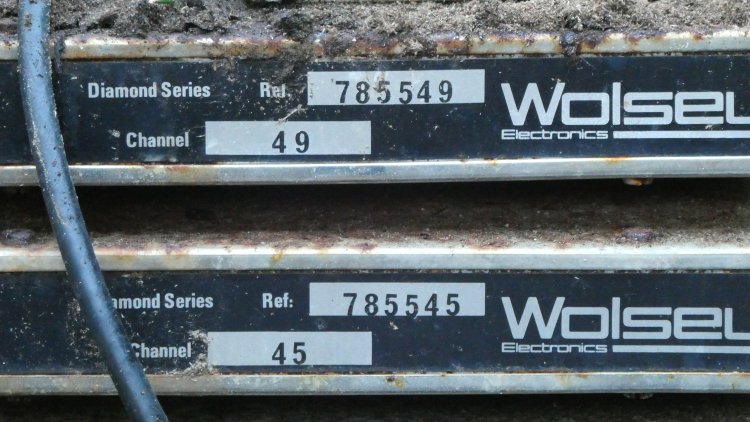
| Serial numbers of the RX amplifier/filters are still clearly visible. Given the size of these units, I suspect that they contain a transmission-line based filtering system to give the hi-Q responses needed. |

| From the RX processors we arrive at two banks of twin transposers. The top modules are the frequency-shifters and I assume that the middle modules are exciters/filters with the transmit modules being at the bottom. |

| The transposer modules still have some labels intact. They are made by Taylor. |
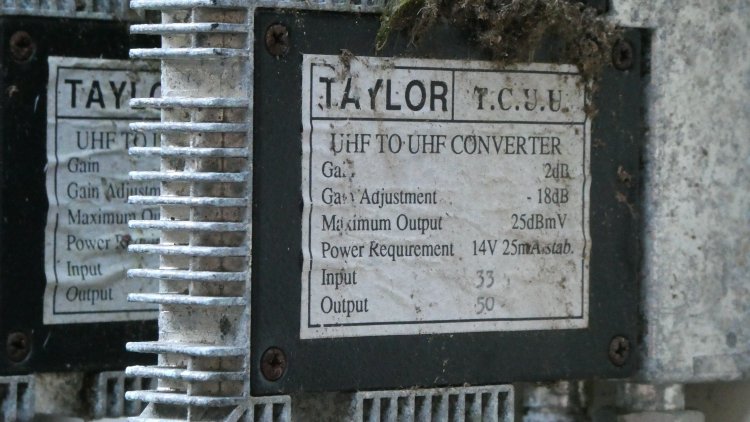
| Detail of one of the transposers. |
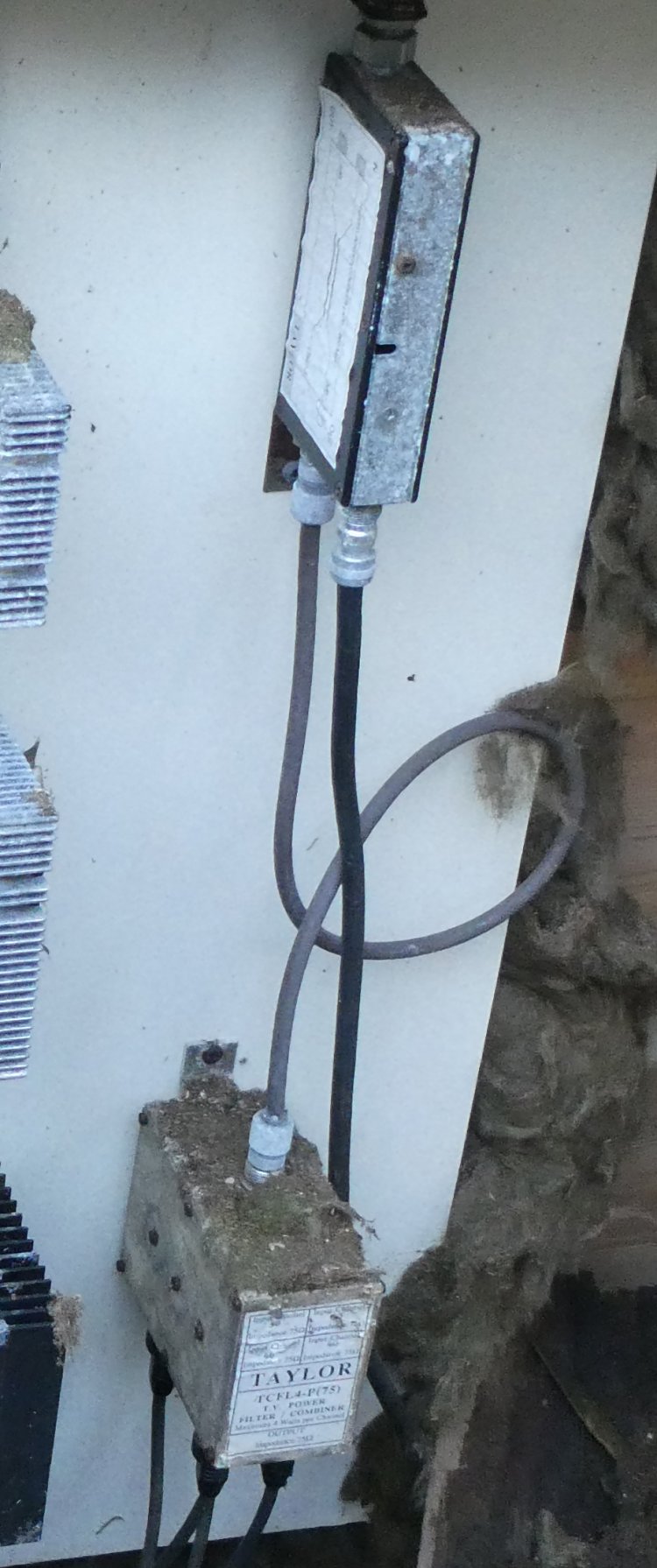
| Finally, the four outputs from the transposer/TX modules are combined in a Taylor combiner (bottom) and then split again into the feeds for the two TX Yagis (top module). |
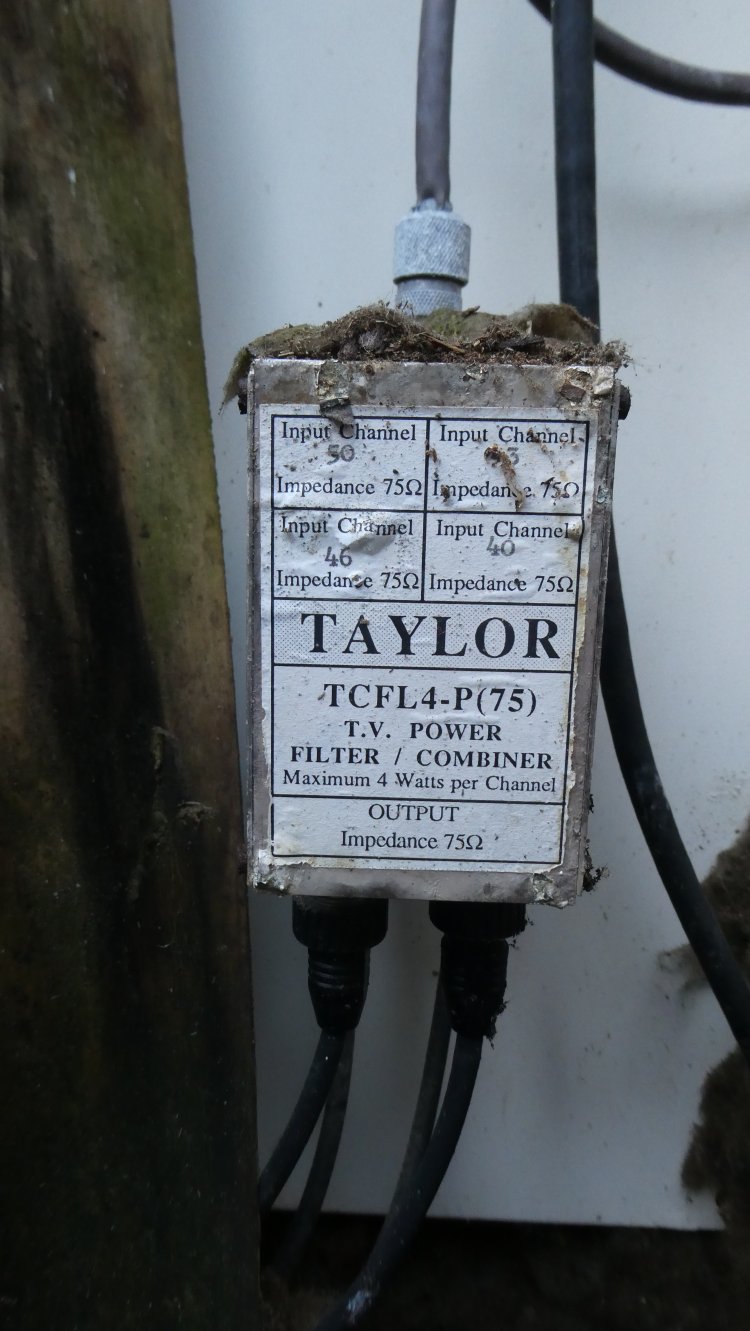
| Detail of the Taylor Broadcast 4-way TX combiner |
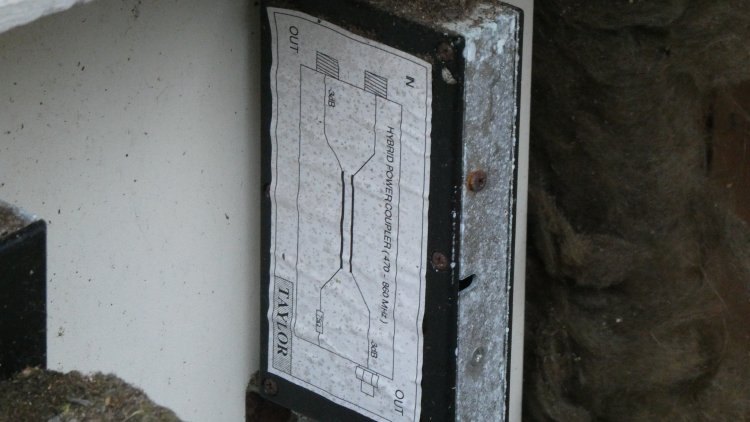
| Detail of the Taylor Broadcast power splitter feeding the two TX Yagis. |

| Further South-West along the northern shore of Loch Ericht, hillwalker Steve Rabone found another abandoned set of aerials consisting of a UHF 4-bay bow-tie grid reflector and a 2-element Band II Yagi. These are not connected with the relay system but were independent receive aerials used to provide reception for a quarry-workers' hut nearby. I include this just in case any of you happen to be passing-by and see it :) |
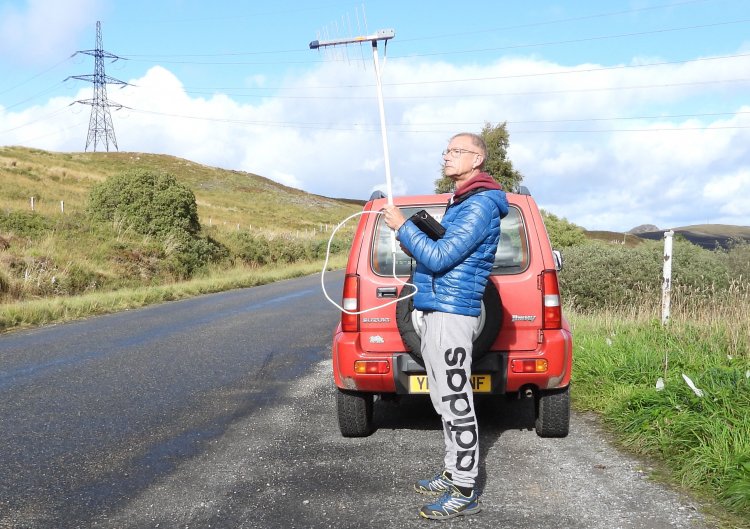
| Finally, yours truly with a short 7dBi log periodic, a 15dB pre-amp and an Edision Multifinder just checking that there isn't any DTT signal around Dalwhinnie. There isn't, but it's best to check :) |
Dalwhinnie (Link Site) | Rosemarkie
| |
Back to TX Gallery index | TX main index
|